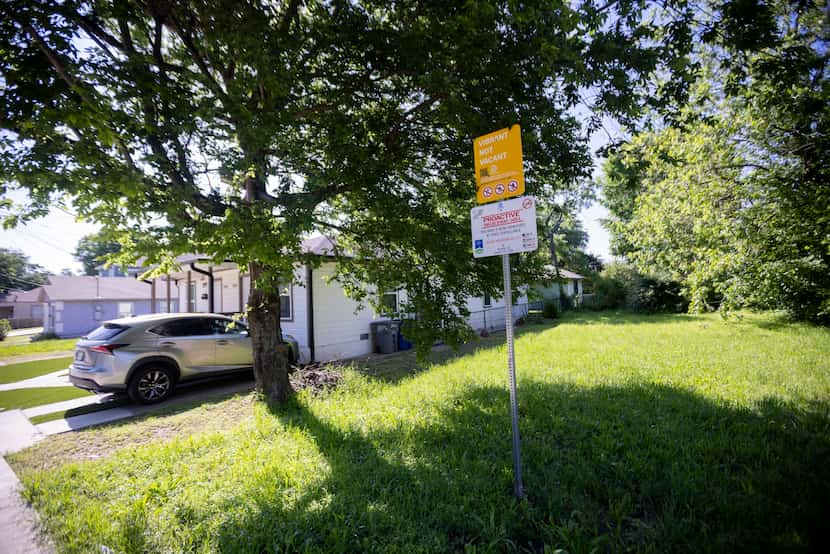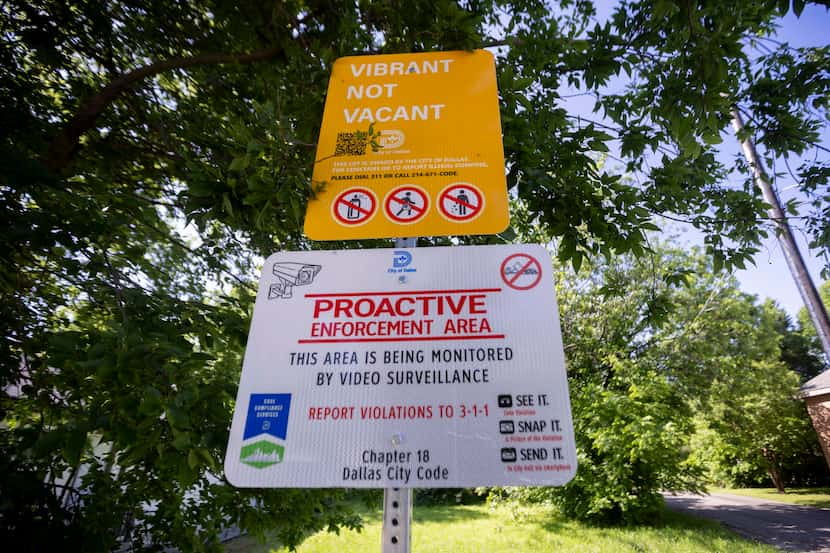Dallas City Council earlier this week adopted the annual plan for the city’s land bank program, a framework that allows for the sale of vacant, foreclosed properties to be used for affordable housing or commercial development.
The city’s annual plan, a requirement of the Urban Land Bank Demonstration Program, includes hundreds of tax-delinquent parcels across the city that are eligible for sale to the land bank.
The plan also lists organizations that are likely eligible to participate, including community development corporations that aim to spur development in areas marked by disinvestment.
Here’s what you need to know about Dallas’ land bank program.
What is a land bank?
Land banks like the one in Dallas are public authorities or nonprofit organizations designed to acquire, hold, manage and redevelop property for community goals like increasing affordable housing.
Depending on a community’s goals, land banks can also serve as a solution for cities to use unproductive, tax-delinquent land for the public good.
Cities that “bank” land for affordable housing development can help limit a developer’s holding costs until construction begins.
Properties can also be donated to land banks from private owners or through transfers from other municipal governments.
In exchange for lower-cost sales of tax-delinquent properties, developers must abide by deed restrictions that require a portion of units built on the parcels to be affordable for lower-income households.
In Dallas’ program, 25% of single-family homes must be affordable to households earning 60% or less of the area median income, and 30% must be affordable to those earning 80% or less of the area median income. All rental units must be affordable to households earning 60% or less of the area median income.
Properties must be occupied by low-income households for at least five years, according to the city’s plan.
How do land banks impact a community?
Land banks can be vital tools that communities can deploy to stabilize property values, increase city revenue, add to neighborhood’s quality of life and increase racial equity, according to the Center for Community Progress, a national nonprofit focused on investment in vacant land.
Properties left vacant can lower property values nearby, ultimately hurting homeowners’ equity and wealth. Land banks are also useful interventions in breaking a cycle of foreclosure so properties can be re-added to tax rolls, according to the Center for Community Progress.
Repurposing vacant land can also increase a neighborhood’s pride about where they live, leading to increased civic engagement in the area’s success, land bank experts say.

Why does Dallas use a land bank?
The Urban Land Bank Demonstration Program is one Dallas’ efforts to spur citywide housing production by reducing barriers to development, particularly for nonprofit developers, according to Darwin Wade, Dallas’ assistant director of Housing and Neighborhood Revitalization.
The city’s land bank — called the Dallas Housing and Acquisition Development Corporation — is a nonprofit given special authority under the Texas Nonprofit Corporation Act to create an inventory of properties for affordable housing for low and moderate-income residents, as well as a growing workforce.
DHADC also focuses on projects that spur economic development and stimulate business and commercial activity by developing new, mixed-income, single-family housing.
The city’s latest strategy for acquiring land will focus on residential properties that are close to one another to reduce development costs and strengthen investments in affordable housing projects.
The land bank program will also focus on acquiring properties located within the targeted reinvestment strategy areas, as outlined in the Dallas Housing Policy 2033 the City Council adopted in April 2023.
Homes in the target areas have lower median sales prices, less stability and more vacancies than the city of Dallas as a whole, and the population in those areas has higher social and economic vulnerabilities, according to data compiled by TDA Consulting, which were hired by the city to help implement the housing policy.
The city will also prioritize acquiring parcels zoned commercial or residential that are near mixed-income housing developments, city-owned land or city-supported economic development projects.
Where are the Dallas properties in the land bank?
The Urban Land Bank Demonstration Program plan includes a list of several hundred properties across the city that are eligible for sale for affordable housing development.
The city expects to refer up to 25 properties for tax foreclosure to be deposited to its land bank program each month, according to the plan. Funding restraints will likely limit the city to refer up to 150 parcels a year.
Once a tax foreclosure judgment is obtained, the properties are sold to the land bank and become part of the inventory, a process that takes approximately 18 months.
Wade briefed the city’s Housing and Homelessness Solutions committee in January about the latest plan.
Dallas City Council member Cara Mendelsohn questioned whether the city could use properties it already owns for the land bank program instead of just tax-delinquent properties.
Wade said the city doesn’t have a specific strategy about using property currently owned by the city for the land bank, but nothing prohibits exploring that as an option.
Cynthia Rogers-Ellickson, interim director of Housing and Neighborhood Revitalization, said the city is often not a good steward of managing its own properties for affordable housing purposes, which is why Dallas often partners with its housing finance corporation and private developers.
“We don’t manage that well so we like to have partners to do that work,” Rogers-Ellickson said.
Who can participate in the land bank program?
The city limits who can participate in the program to only “qualified participating developers” who are in good standing with the state and city, have built at least one housing unit in the past three years and have complied with all city programs.
Community housing development organizations may also acquire lots through a “right of first refusal” option if the property offered for sale is within the group’s geographic boundaries of operation.
The organization must also have built within a mile of the parcel at least three single-family homes, duplexes or one multifamily development with four or more units within the past two years, according to the land bank plan.
Three organizations have been identified by the city as eligible for buying land bank properties: Notre Dame Place, Builders of Hope and Brompton Community Development Corporation.


/cloudfront-us-east-1.images.arcpublishing.com/dmn/FTXZRZB3AJNRHINQ4K42QB3NJE.jpg)
/cloudfront-us-east-1.images.arcpublishing.com/dmn/QHNQ4MYH6RFKFMOEVCOTE4W6DE.jpg)
/cloudfront-us-east-1.images.arcpublishing.com/dmn/XDI4432JBFDRNAW33PARNWMWNA.jpg)
/cloudfront-us-east-1.images.arcpublishing.com/dmn/KNZ4HZA6PJBODHV4T7SZGDMUBY.jpg)
/cloudfront-us-east-1.images.arcpublishing.com/dmn/FE2VEAW4KFGXFF3VAGVH3RJOYY.jpg)